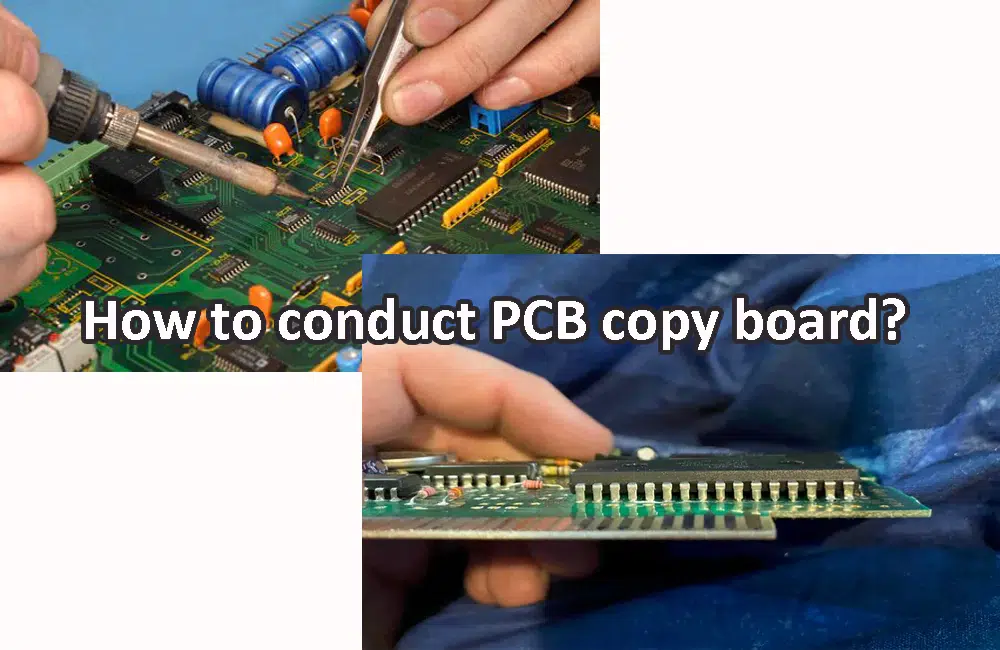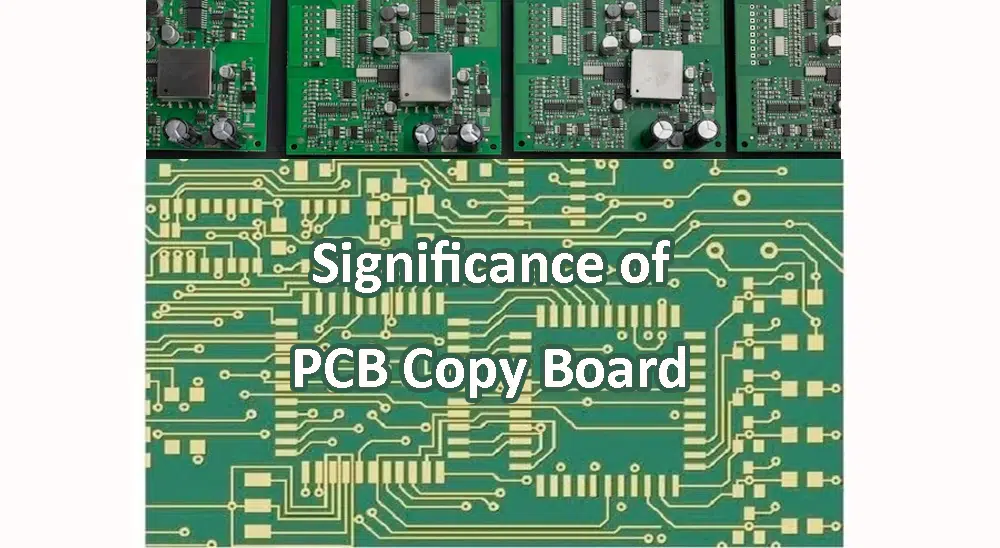In the realm of electronics manufacturing and engineering, the process of PCB (Printed Circuit Board) copy board, also known as PCB reverse engineering or cloning, plays a pivotal role. PCB copy board involves meticulously replicating an existing PCB design without having access to its original design files.
This intricate process requires a blend of technical expertise, attention to detail, and adherence to ethical considerations. In this article, we delve into the nuances of PCB copy board, exploring its significance, methodology, and ethical considerations.
What is PCB Copy Board?
PCBs serve as the backbone of modern electronics, providing a platform for interconnecting electronic components and facilitating the flow of electrical signals. However, there are instances where access to the original PCB design files is unavailable or restricted, necessitating the need for PCB copy board.
How to conduct PCB copy board?

Acquire the Original PCB: Obtain the original PCB that you want to replicate. This could be a purchased product, a prototype, or any existing PCB that you need to replicate.
Visual Inspection: Conduct a thorough visual inspection of the original PCB. Note down important details such as component placements, trace routing, and any identifying marks or labels.
Component Identification: Identify and document all components present on the original PCB, including their part numbers, values, and orientations. Use a magnifying glass if necessary to read small markings on components.
Trace Mapping: Trace the connections between components on the PCB. This can be done visually or with the help of a multimeter set to continuity mode. Document the connections to understand the circuit topology.
Create Schematic Diagram: Based on the traced connections, create a schematic diagram of the PCB. You can use software tools like Eagle, Altium Designer, or KiCad to draw the schematic. Input all components and their connections accurately.
PCB Layout: Use the schematic diagram to design the layout of the new PCB. Place components in the same locations as the original PCB and route traces following the same paths. Ensure that the new PCB layout matches the dimensions and form factor of the original PCB.
Manufacture the New PCB: Once the PCB layout is complete, generate Gerber files or other manufacturing files required for PCB fabrication. Send these files to a PCB manufacturing service to produce the new PCB.
Component Procurement: Purchase all necessary components based on the part numbers and values identified during the component identification step. Ensure that the components match the specifications of the original PCB.
Assembly: Populate the new PCB with the components according to the component placements specified in the layout. Solder the components onto the PCB carefully, ensuring proper orientation and alignment.
Testing: After assembly, perform functional testing on the new PCB to verify that it behaves identically to the original PCB. Use test equipment such as oscilloscopes, multimeters, and function generators to validate the functionality of the copied PCB.
Iterative Improvement: If any discrepancies or issues are identified during testing, make necessary revisions to the PCB layout and repeat the manufacturing and testing process until the desired functionality is achieved.
Documentation: Document the entire PCB copy process, including the schematic diagram, PCB layout files, component list, and testing results. This documentation will be valuable for future reference or further iterations of the PCB design.
What is significance of PCB Copy Board?
PCB copy board serves several critical purposes in the realm of electronics manufacturing and engineering:
Legacy Product Support: PCB copy board enables the continued production and maintenance of legacy electronic products for which design files may no longer be available.
Counterfeit Detection: It facilitates the identification and validation of counterfeit electronic products by comparing them against genuine PCB designs.
Design Iteration and Improvement: PCB copy board allows engineers to study existing PCB designs, identify areas for improvement, and iterate upon them to enhance performance or functionality.
Repair and Troubleshooting: It aids in diagnosing and troubleshooting issues with electronic devices by replicating their PCB designs for analysis and testing.
Ethical Considerations about PCB copy board
While PCB copy board can be a valuable tool in certain scenarios, it’s essential to approach it ethically and responsibly. Some key ethical considerations include:
Intellectual Property Rights: Respect the intellectual property rights of original PCB designers and manufacturers. Avoid unauthorized copying of proprietary designs or violating patents, copyrights, or trade secrets.
Transparency and Disclosure: Clearly communicate the intentions and purposes behind PCB copy board activities, especially in cases where it involves third-party products or intellectual property.
Legal Compliance: Ensure compliance with all applicable laws, regulations, and industry standards governing intellectual property rights, trade secrets, and product safety.
Professional Integrity: Uphold professional integrity and ethical standards throughout the PCB copy board process, prioritizing honesty, fairness, and respect for others’ intellectual property.
Conclusion
PCB copy board is a multifaceted process that requires a careful balance of technical proficiency, ethical considerations, and legal compliance. When conducted responsibly, it can serve as a valuable tool for supporting legacy products, detecting counterfeit electronics, and driving innovation in electronic design and engineering.
By understanding the significance, methodology, and ethical considerations associated with PCB copy board, engineers and manufacturers can navigate this intricate process with integrity and effectiveness, ultimately contributing to the advancement of the electronics industry.











